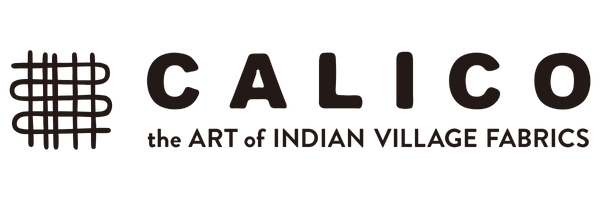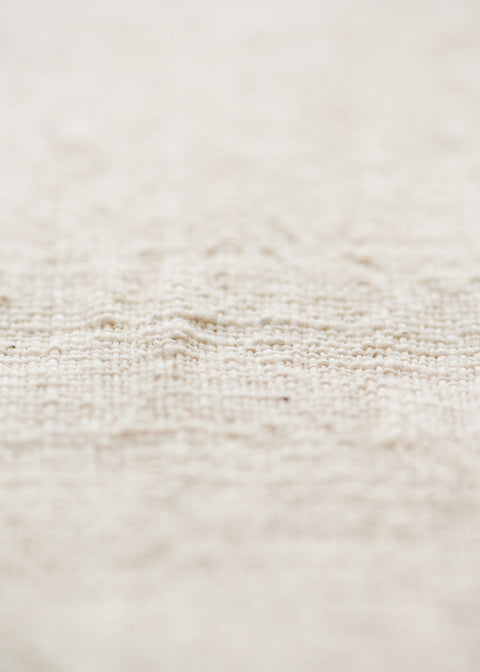
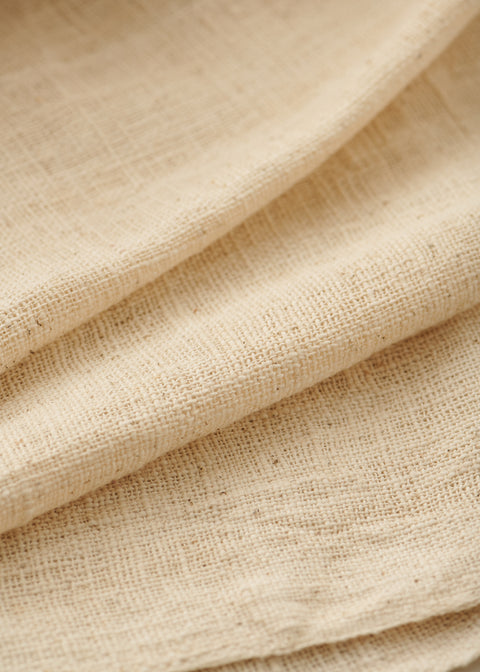
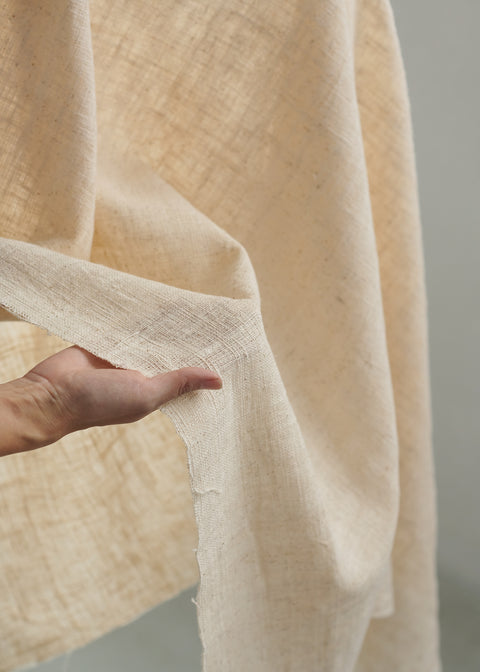
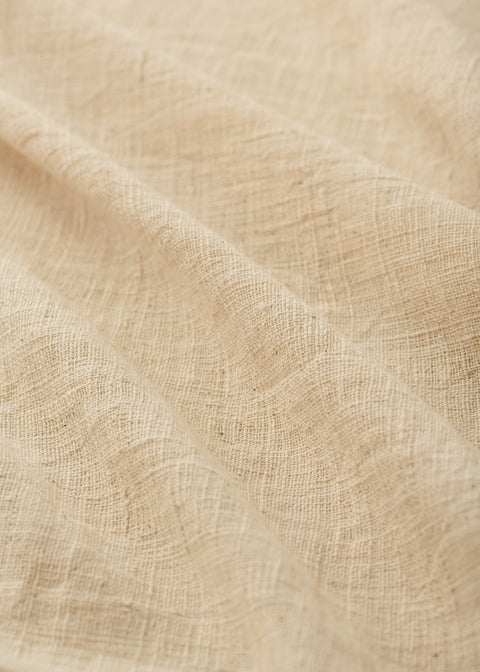
ペティチャルカカラコットンカディ
※表示価格は10cmあたりのお値段であり、10cm単位でお求めいただくことができます。例えば、80cmをご購入される場合は個数は「8」を選択してください。
商品説明
カラコットンは、不均一な縮みが入った独特のテクスチャーとなっています。
触り心地は、CALICOが通常扱うベンガルのカディなどに比べると、ゴワゴワしていますが、その粗野な感じがかえって新鮮で、古の時代のコットンの風情があります。
そのなかでも、こちらのペティチャルカのカディは、また特別なものです。
(2023.8. 現地の方の使う言葉に合わせて、シングルチャルカからペティチャルカという呼称に変更しました)
インド全土で、チャルカといえば、ほとんどがアンバーチャルカ(生産性の高いチャルカ)に切り替わってしまった今、携帯できる大型本のようなペティチャルカによる糸紡ぎは、ほぼ自家用か、はたまた、学校で瞑想しながら回すようなシンボリックなイメージでしかありませんでした。
Khamirが、ペティチャルカのカディも作れるようになったと聞いたときも、半信半疑でした。果たして誰がそんなに効率の悪い仕事を引き受けてくれるのだろうかと。
その答えをもっていたのは、ソーダラージプートの女性たちでした。彼女たちは、元々ペティチャルカの紡ぎを行っていたのではありません。NGOの方に教え込まれたのは今から30年以上も前のこと。若い時はスーフなどの刺繍に夢中になっていた彼女たちも、歳をとり、刺繍が困難になると、他の手仕事を求めるようになりました。ソーダラージプートの女性たちは慣習的に家の外の仕事には就けないということもあります。
元々器用で好奇心が多い彼女たちを虜にしたペティチャルカの仕事は、同じソーダラージプートの村から村に伝わり、今では二百人以上の女性が従事しています。
現地の羊の毛も、カラコットンに負けず劣らず短く、紡ぐのは容易ではありません。そのなかでも、上手なひとと上手でないひとがいて、上手なひとは一層技に磨きをかけ、スピードも早くなるということでした。
アンバーチャルカの15%くらいしか生産効率はありませんが、お金よりも腕を試される、そこに面白みを見出す女性たちが後を立ちません。
そんなペティチャルカで紡いだ、存在感たっぷりのカラコットンカディの生地。
糸の太さは、10~14カウント、つまり、揺らぎや個体差が大きいです。
その代え難い、質感を是非お試しください。
サイズ
生地幅:約100-110cm
* サイズ・色は実物と異なる場合がございます。
原材料
在来種オーガニックコットン
生産地
カッチ、グジャラート州
デザインのしくみ
職人や生産団体によるデザイン
糸紡ぎ
シングルチャルカによる手紡ぎ
織り
手機による平織
染め
無染、天然
お求めいただく前に
* こちらの商品は、店頭でも同時販売しておりますため、サイトよりご注文いただいた時点で稀に完売していることがございます。万が一、ご注文後に在庫がなかった場合にはご連絡させていただきますので、ご了承くださいませ。
* 複数本をお求めの際はなるべく同じお色目の反をお送りいたしますが、もしご希望に適わない場合は、送料お客様ご負担にて返品をお受けしております。ご相談ください。(裁断・加工後のご返品はお受けしておりませんので、予めご了承くださいませ。)
* 手紡ぎの糸は、村の女性たちが主にアンバーチャルカと呼ばれる効率性の高い近代糸車を使ってお作りしています。糸が切れた場合は、それを手で紡ぐためにフシができるのが特徴です。
* 手織りや手紡ぎの布の多くは村の小屋で作業をしており、その環境によって糸や草が混入していることがございます。また、不均一な箇所やヨレ、糸飛びによるカスレや止むを得ない多少の汚れがある場合がございます。インドの布の特徴として、ご理解の上お求めください。
* 素材によっては使用時の摩擦により、ひきつれや毛羽立ちがおこることがございます。過度な摩擦や圧力は、生地破損の原因になりますのでお避けください。
